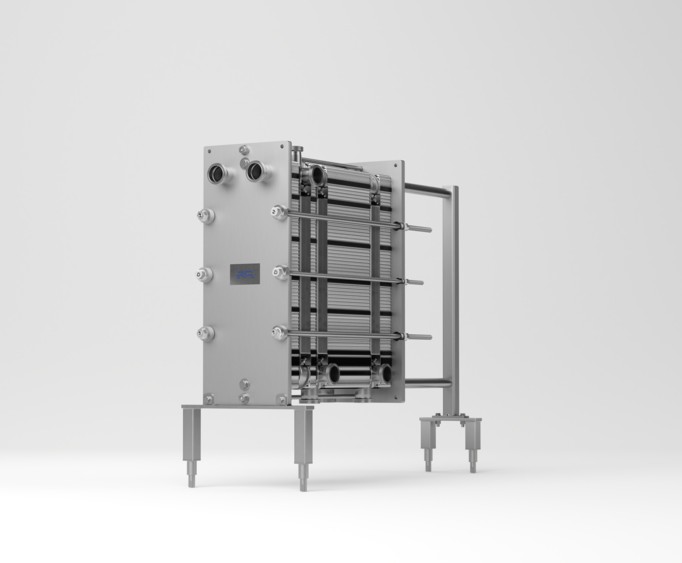Alfa Laval introduces state-of-the-art sanitary heat exchanger

Alfa Laval has unveiled its cutting-edge range of hygienic gasketed plate heat exchangers (GPHE) designed to enhance efficiency in food and beverage operations while maintaining high-level cleanliness requirements.
In line with increased investment into the development of technologies, Alfa Laval has unveiled its new hygienic line, meticulously designed to enhance operational uptime and ensure compliance with the exacting hygiene demands of the industry.
Colin Morgan, business unit manager for food heat transfer at Alfa Laval, stated: “Maintaining hygiene has always been a top priority for (food and beverage/pharmaceutical) manufacturers, given the potential risks of cross-contamination between product batches if not rigorously addressed.
“However, this imperative must now be harmonised with the need for increased productivity, as rising energy costs are eroding margins for many manufacturers. Our innovative hygienic line directly addresses both of these challenges by extending equipment operating times without compromising hygiene standards.”
The Hygienic Line as of today, includes H4 and the larger H8, HL8, and HL5, with HL10 due by the end of the year. Building upon Alfa Laval’s existing heat exchanger technology, this hygienic line boasts an expanded transfer area for even heat distribution and top-tier efficiency. It also incorporates a new cleaning-in-place (CIP) channel to enhance cleanability.
Newly designed units are already planned for release over the course of the next two years including HL8- WG, H5 and H3.
SmoothPort, an exclusive innovation crafted for the Alfa Laval Hygienic Line, is designed to enhance cleanliness and drainage efficiency, effectively combating residue build-up. This innovation repositions the gasket’s edge against the plate, minimising the risk of particle entrapment and maximising the unit’s drainage capabilities.
Collectively, these features result in extended operational durations, and the customisability of the GPHE allows it to adapt to specific operational requirements without the need to purchase new exchangers.
Morgan concluded: “The hygienic line has the potential to revolutionise how manufacturers approach equipment uptime. For instance, in an average process line, operators might typically allocate four hours to cleaning for every eight hours of active equipment usage to prevent cross-contamination. With the hygienic line, this can be streamlined to just two hours of cleaning for every 12 hours in operation, all while maintaining rigorous standards.
“The hygienic line promises a transformative impact on [food and beverage/pharmaceutical] process lines. Enhanced efficiency, increased uptime, and reduced chemical consumption translate into remarkably short payback periods, sometimes as brief as a single week. Technologies like this will be instrumental in enhancing productivity and safeguarding the broader UK manufacturing sector’s resilience.”
Related content
Source: foodanddrinktechnology.com

